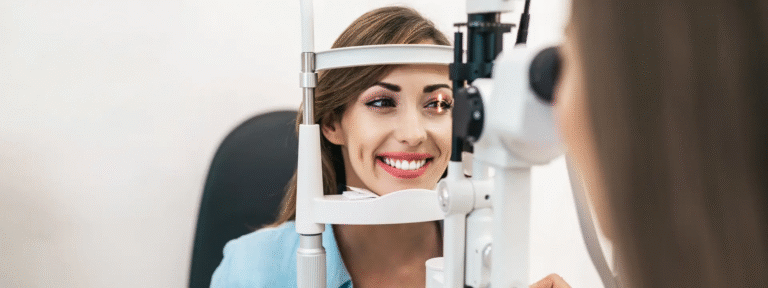Childbirth is a life-changing experience, but it often brings lasting physical changes to a woman’s body—especially in the vaginal area. One of the most common post-childbirth concerns is vaginal laxity, or a feeling of looseness in the vaginal canal, which can impact comfort, sexual satisfaction, and overall quality of life.
Vaginal rejuvenation offers effective solutions to this issue, helping women restore vaginal tone, elasticity, and confidence. This guide explains what vaginal laxity is, why it happens after childbirth, and how various vaginal rejuvenation treatments can help.
🔍 Understanding Vaginal Laxity After Childbirth
What Is Vaginal Laxity?
Vaginal laxity refers to the loosening or decreased tightness of the vaginal walls and pelvic floor muscles. After vaginal delivery, the tissues and muscles stretch considerably to allow the baby’s passage. While some recovery is natural, many women experience permanent or semi-permanent laxity.
Why Does It Happen?
- Stretching of vaginal walls and pelvic muscles: The vaginal canal stretches up to 200% during delivery.
- Pelvic floor muscle weakening: The muscles supporting the vagina and bladder can weaken or tear.
- Loss of collagen and elastin: Childbirth and hormonal changes reduce these key proteins responsible for tissue firmness.
- Trauma and episiotomies: Surgical cuts or tears can affect tissue integrity.
- Multiple vaginal births: Each subsequent delivery may increase the degree of laxity.
⚠️ Effects of Vaginal Laxity
- Decreased sexual satisfaction: Reduced friction and sensation can impact intimacy.
- Urinary incontinence: Weakened pelvic support may cause leaking during coughing or exercise.
- Feeling of “looseness”: A subjective feeling that can affect self-esteem.
- Pelvic discomfort or pressure: In some cases, laxity may contribute to pelvic organ prolapse symptoms.
🛠️ How Vaginal Rejuvenation Treats Vaginal Laxity
Vaginal rejuvenation treatments target the underlying causes of laxity by restoring tissue tone, strength, and elasticity through various mechanisms.
1. Non-Surgical Energy-Based Treatments
Laser Therapy
- How it works: Fractional CO₂ or Er:YAG lasers deliver controlled heat to vaginal tissues.
- Effect: Stimulates collagen and elastin production, thickening vaginal walls and restoring elasticity.
- Benefits: Improves tightness, lubrication, and vaginal health with minimal downtime.
- Typical course: 2–3 sessions spaced 4–6 weeks apart.
Radiofrequency (RF) Therapy
- How it works: Uses radiofrequency energy to heat tissues and promote collagen remodeling.
- Effect: Tightens vaginal walls and improves blood flow.
- Benefits: Non-invasive, painless, immediate recovery.
- Typical course: 3 sessions, with annual maintenance.
2. Platelet-Rich Plasma (PRP) Therapy
- How it works: PRP is injected into vaginal tissues to promote healing and tissue regeneration using your own growth factors.
- Effect: Enhances tissue quality, sensation, and elasticity.
- Often combined with: Laser or RF treatments for synergistic effect.
3. Surgical Vaginal Rejuvenation (Vaginoplasty)
- How it works: A surgeon removes excess vaginal lining and tightens underlying muscles.
- Effect: Provides more significant and permanent tightening.
- Ideal for: Severe laxity, especially after multiple vaginal deliveries.
- Recovery: 4 to 6 weeks with activity restrictions.
🩺 Benefits of Vaginal Rejuvenation for Post-Childbirth Laxity
- Restores vaginal tightness and tone, improving sexual sensation for both partners.
- Increases confidence and body positivity.
- Improves urinary continence by supporting pelvic floor muscles.
- Reduces vaginal dryness and discomfort, especially when combined with hormonal treatments.
- Minimizes need for more invasive pelvic surgeries in some cases.
👩⚕️ Who Is a Good Candidate?
- Women experiencing vaginal looseness after one or more vaginal deliveries.
- Those with decreased sexual satisfaction or sensation.
- Patients with mild to moderate pelvic floor weakening.
- Women seeking either non-surgical options or surgical correction.
- Must be in good overall health without active infections or contraindications.
📝 What to Expect During Treatment
- Consultation: Assessment of vaginal tone, pelvic floor strength, and symptoms.
- Treatment plan: Customized based on severity, goals, and medical history.
- Procedure: Usually outpatient; non-surgical treatments take 30–60 minutes, surgical procedures last 1–2 hours.
- Recovery: Minimal for non-surgical; longer for surgery.
- Follow-up: Essential to monitor results and plan maintenance if needed.
🌟 Patient Testimonials
“After my second child, I noticed I wasn’t the same — vaginal rejuvenation gave me back control and confidence in my body.” — Sarah, 34
“The laser treatments were quick, painless, and improved my intimacy without surgery.” — Maria, 38
🩻 Final Thoughts
Vaginal laxity after childbirth is common and treatable. Vaginal rejuvenation, whether non-surgical or surgical, offers safe and effective options to restore tightness, improve function, and enhance quality of life. Consult with a qualified specialist to discuss the best treatment tailored to your needs and lifestyle.




